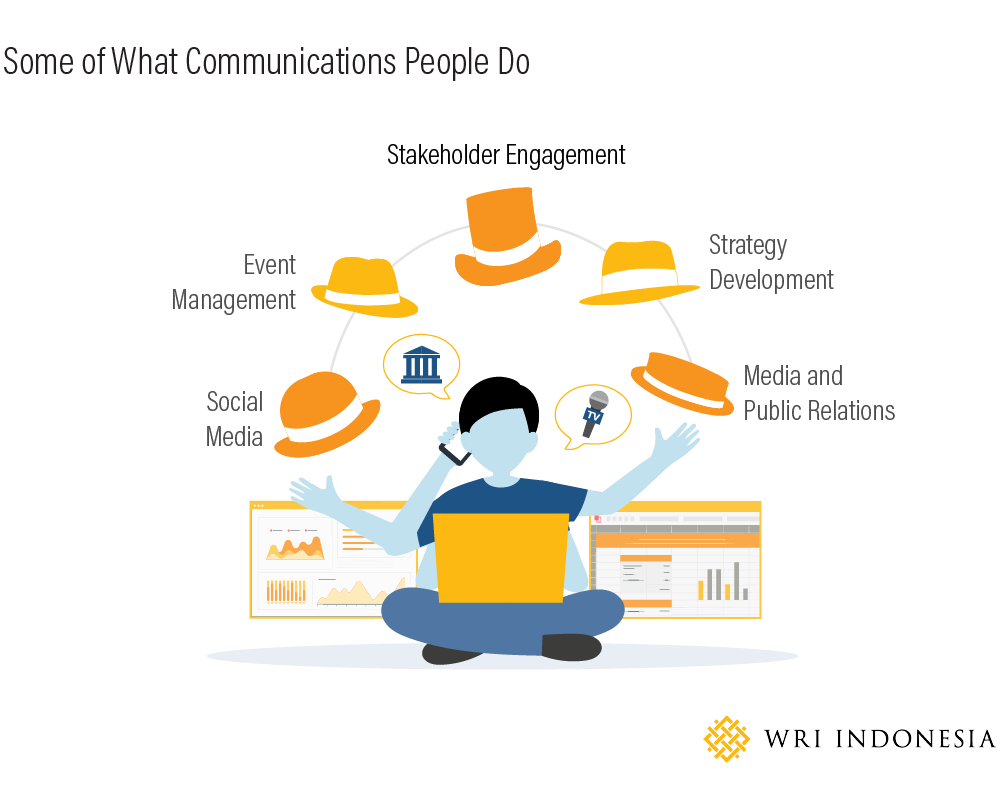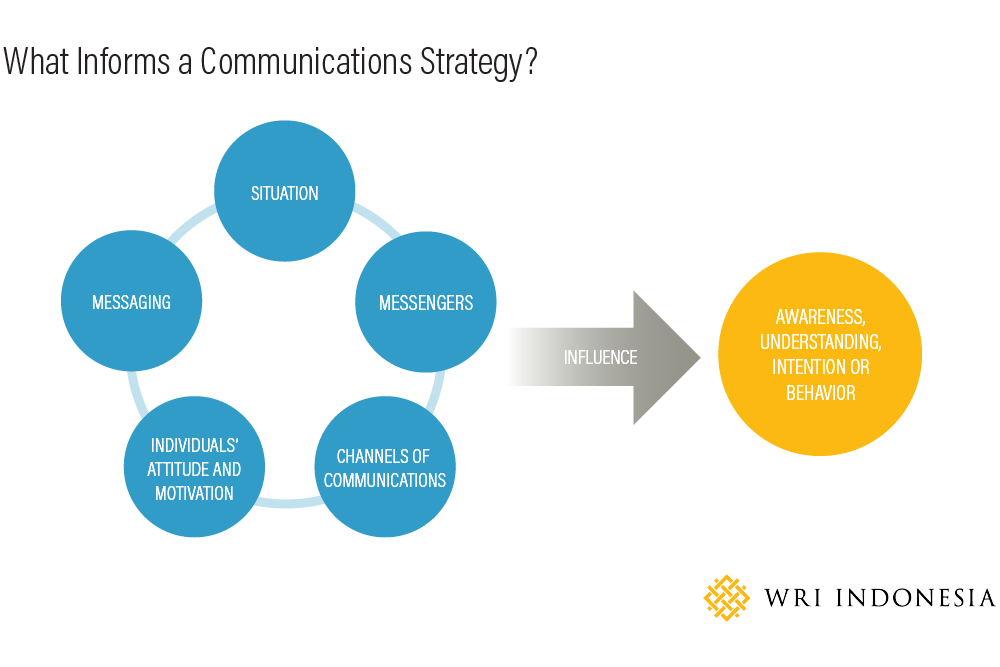
Communications Series #1: What People Think about when They Think about Communications
By: Reidinar Juliane, Senior Communications Lead
On my first day at WRI Indonesia, my colleague approached me, saying: “Hey, we’re having this big launch event today. Since you’re a communications person, you should be the MC.”
Trust me, she is not the only one who thinks that one of communications people’s jobs is to be an MC.
Every year, when I asked my students on why they chose communications studies as a degree, majority would say: “because I like meeting people.” And when asked which communications career they want to pursue, most would say event management, marketing, and public relations, with some mentioning journalism. Indeed, many – including perhaps some of my colleagues – associate communications with the sole activities of interacting with people or delivering information.
Those are certainly part of communications, but there is always a thought process behind those activities. Communications is a science.

Communications involve modeling, as much as economics and epidemiology do. Modeling is often used to understand how various factors such as messaging, messengers, channels of communications, situation, individuals’ attitude and motivation come into play to affect one’s awareness, understanding, intention or behavior.
Such modeling represents a thought process, and that informs a communications strategy. Communications strategy lays out, among others, our intended impact or goal, who we want to reach, who they are, messaging, the most effective channel, and how we measure our impact. A thorough research should be done to inform each aspect.
In children’s health sector, for instance, when designing a communications strategy to encourage children to exercise more, we need to comprehend what children understand or misunderstand about exercise, their underlying values and motivation: Are they intrinsically or extrinsically motivated? Do they generally conform to social norms? What are their underlying attitudes towards exercise? Where do they get their information from? Whom they trust?
Understanding these questions would enable us to determine the most suitable and effective approach. In the context above, messaging that explores the internal health benefits of exercise such as “exercise will make you healthy and feel great” would work best for children who are intrinsically motivated. Likewise, messaging that portrays the external benefits of exercise such as “exercise will make you look attractive” will work best for children who are extrinsically motivated. The journey does not stop here. The channel used to deliver this messaging (gaming vs. brochures), children’s environment (competitive vs. non-competitive) and other variables interact in a way that determines how communications intervention can improve knowledge and drive behavior.
Same thought process applies in sustainability area, a core issue at WRI Indonesia. Communications people segment the target audience and assess how climate change should be framed (e.g. fear vs. hopeful, as a scientific, health, business, environmental) as the degree to which it can be convincing varies to different audiences. Different audiences also tend to trust different messengers and respond to different formats such as face to face, text, video and online. With these in mind, the way we do communications at WRI Indonesia can range from flag waving promoting our brand, collaborating with partners for creative campaign, or to completely supporting behind the scene to let our messengers deliver the narrative.

There is no one size fits all communications strategy, but it has to be well researched and well informed according to the goal and impact the organization would like to achieve. In corporations, communications activities might seek to enhance positive reputation that leads to stakeholders’ trust and increase in business performance. In government, it might be to secure citizens’ trust and support towards certain policies. In NGOs like WRI Indonesia, it could be to increase public awareness and drive stakeholders’ behavior or encourage public officials to issue certain policies.
While the goal may be different, it is critical to assess how our communications intervention can lead to such goal. Some measures the success through readership rate of the articles they promote or using media hits, engagement rate, and pre- and post-intervention perception survey to assess knowledge and reputation. Some also measure impact beyond the timeline of intervention to ensure if communications activities lead to long-term impact.
An example of a robust communications strategy that leads to reputation and prosperous business can be seen from a US outdoor clothing company that championed a sustainable supply chain and advocacy for the environment over the past 35 years. Through clear target audience (environmentally conscious and upscale consumers), goal (building business while creating a safe planet), consistent action, messaging, creative campaign, and sustainability strategy – such as how they fund restoration of natural environment and make 70 per cent of their products from recycled materials – the company has grown from a small one to a global leader in sustainable apparel industry.
On the contrary, an inadequate communications strategy can be costly. We’ve seen these days that public are faced with uncertainties as Indonesia fails to inform its citizens about coronavirus, its development, and the call for action to citizens. From mixed signals communicating that Indonesia has been spared from coronavirus in early March to different statements from the President and ministers on the ban on mudik, a lack of informed communications strategy has caused public’s confusion.
So there you have it. It’s great if communications people can be a great MC, but their job entails beyond interaction with people. It is also about strategy. So now when we think about communications’ job, think also about developing a proper communications strategy to influence attitude, behavior, trust and business. But don’t worry, I’ll still gladly be an MC if needed.